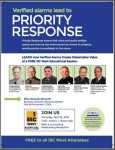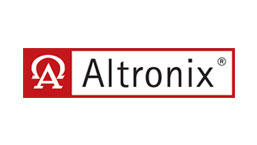Cyber Security, Understanding Personalities in Your Workforce, and Crisis Communications Are Featured Topics at 2015 CSAA Annual Meeting
Keynote Address by Stan Stahl, Ph.D. on Cybercrime Challenges Leads Strong Roster of Speakers and Sessions
And now for something a little different! CSAA International has just announced the first three featured speakers for its 2015 Annual Meeting in Sonoma, CA, October 10-14. (Education sessions will be held October 12-14).
The 2015 meeting marks the beginning of a multi-year reimagining of CSAA’s annual event. “Over the next several years, CSAA will be restructuring our traditional annual meeting in order to bring the greatest possible value to our members who attend,” said CSAA President Pamela J. Petrow.
”Members will start to see these changes in Sonoma, where we have already assembled an exciting roster of speakers to present on topics that will help them advance their businesses,” said Petrow. The announced speakers are:
Keynote Speaker: Stan Stahl, Ph.D. — “Meeting the Information Security Management Challenge: The Financial Implications of Cybercrime on the Alarm Monitoring Industry” (Sponsored by Honeywell Security Products)
 Stan Stahl, President of Citadel Information Group, an information security management services firm, says that cybercrime costs businesses and non-profits billions of dollars annually in theft, fraud, embezzlement, and other losses, and that meeting the cyber security challenge requires Executive Management and their Boards to take cyber security as seriously as they take operations and finance. His keynote address will illustrate the dangers of cybercrime, show how we let cyber-criminals onto our networks and provide actionable management strategies and tactics every business can take to effectively manage its cyber-risk.
Stan Stahl, President of Citadel Information Group, an information security management services firm, says that cybercrime costs businesses and non-profits billions of dollars annually in theft, fraud, embezzlement, and other losses, and that meeting the cyber security challenge requires Executive Management and their Boards to take cyber security as seriously as they take operations and finance. His keynote address will illustrate the dangers of cybercrime, show how we let cyber-criminals onto our networks and provide actionable management strategies and tactics every business can take to effectively manage its cyber-risk.
“Managing cyber-risk has become the new normal, whether it’s protecting your network from cyber-criminals who want to steal your online bank credentials, dishonest competitors wanting to steal your customer lists or thieves wanting to disrupt the IP connection between you and your customers,” said Stahl. “Statistics suggest that more than 30% of cybercrime victims are small businesses like many of those in CSAA, and that 60% of these victims are out-of-business within 6 months of being hacked.”
Featured Speaker: David Margulies –“Protect Your Reputation: Crisis Management in the Cyber Age”
in the Cyber Age”
Communications guru David Margulies frequently reminds audiences that in the Cyber Age, “A lie can be halfway around the world before the truth has an opportunity to put its pants on.” At his presentation in Sonoma, he will demonstrate to attendees that “what you don’t know about crisis management in the Cyber Age can kill your business.” He will share strategies and tactics for managing unforeseen events to protect company brand and reputation.
Featured Speaker: Robert A. Rohm, Ph.D. — “Why Can’t You Be Normal…Like Me!”
 Robert A. Rohm is a dynamic speaker, best-selling author, educational consultant and guest lecturer whose message focuses on transforming people into leaders who can maximize their individual potential. Describing his special session at the CSAA Annual Meeting, Rohm says, “In the normal course of a day we meet all kinds of people. Some of them we really connect with and others… well – let’s just say we don’t quite understand them. Have you ever considered the fact that most people do not do things against you as much as they do things for themselves? This will be a lively, interactive session that will help you understand yourself and others better than you ever thought possible.”
Robert A. Rohm is a dynamic speaker, best-selling author, educational consultant and guest lecturer whose message focuses on transforming people into leaders who can maximize their individual potential. Describing his special session at the CSAA Annual Meeting, Rohm says, “In the normal course of a day we meet all kinds of people. Some of them we really connect with and others… well – let’s just say we don’t quite understand them. Have you ever considered the fact that most people do not do things against you as much as they do things for themselves? This will be a lively, interactive session that will help you understand yourself and others better than you ever thought possible.”
Read the complete announcement.
For more information, contact Elizabeth Lasko at CSAA, 703-242-4670 x 16 or ewlasko@csaaintl.org.


![Pam-Petrow[1]](https://themonitoringassociation.files.wordpress.com/2015/05/pam-petrow1.jpg?w=120)

 Session Sponsored by PPVAR: April 16, 4-6:00 PM
Session Sponsored by PPVAR: April 16, 4-6:00 PM 








